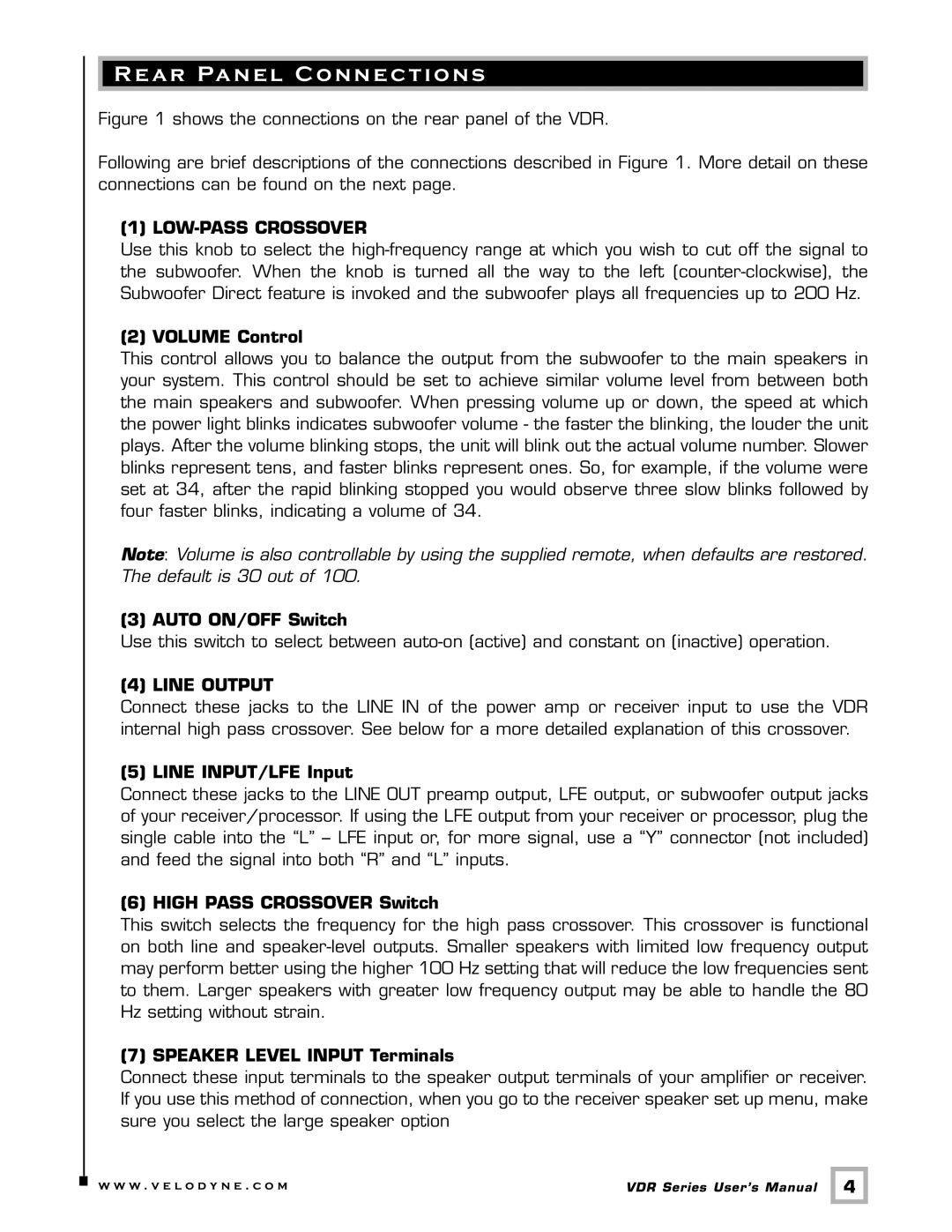VDR-10, VDR-12 specifications
Velodyne Acoustics has long been recognized as a leader in the production of high-performance audio equipment, particularly subwoofers. Among their impressive range of products, the VDR-12 and VDR-10 stand out for their innovative features and robust capabilities, making them excellent choices for audiophiles and casual listeners alike.The Velodyne VDR-12 is a 12-inch subwoofer designed to deliver deep, powerful bass while maintaining accuracy. One of its main features is the advanced Class D amplification, which ensures efficient power usage without sacrificing sound quality. The VDR-12 boasts a power rating of 800 watts peak and 400 watts RMS, allowing it to produce deep, thunderous lows that can fill a room without distortion. Its frequency response ranges from 24 Hz to 150 Hz, ensuring that it can handle a wide variety of audio content, from movies to music.
Another standout characteristic of the VDR-12 is its intelligent room optimization technology, which automatically calibrates the subwoofer's output based on the acoustics of the listening environment. This feature allows users to enjoy optimal sound quality without the need for complex manual adjustments. Furthermore, the VDR-12 includes adjustable crossover and phase controls, giving listeners the flexibility to customize their audio experience to suit their preferences.
On the other hand, the Velodyne VDR-10 is a 10-inch subwoofer that shares many of the same cutting-edge technologies as its larger counterpart. With a power output of 600 watts peak and 300 watts RMS, the VDR-10 is designed to provide impactful bass performance in a more compact form factor. Its frequency response extends down to 28 Hz, making it an ideal choice for those with limited space who do not want to compromise on sound quality.
The VDR-10 also features Velodyne's intelligent room optimization technology, which ensures that users can enjoy optimal performance regardless of their room's acoustics. Additionally, its sleek design makes it an attractive addition to any home audio setup. Both the VDR-12 and VDR-10 come equipped with a durable, high-excursion driver that enhances responsiveness while minimizing distortion.
In summary, the Velodyne Acoustics VDR-12 and VDR-10 subwoofers represent the cutting edge of audio technology, offering powerful, deep bass and a host of features designed to enhance the listening experience. With intelligent room optimization, advanced amplification technologies, and customizable settings, these subwoofers cater to audiophiles and casual listeners, providing top-tier performance in a stylish package. Whether for a home theater or a music setup, either model remains an exceptional option for those seeking unparalleled sound quality.

